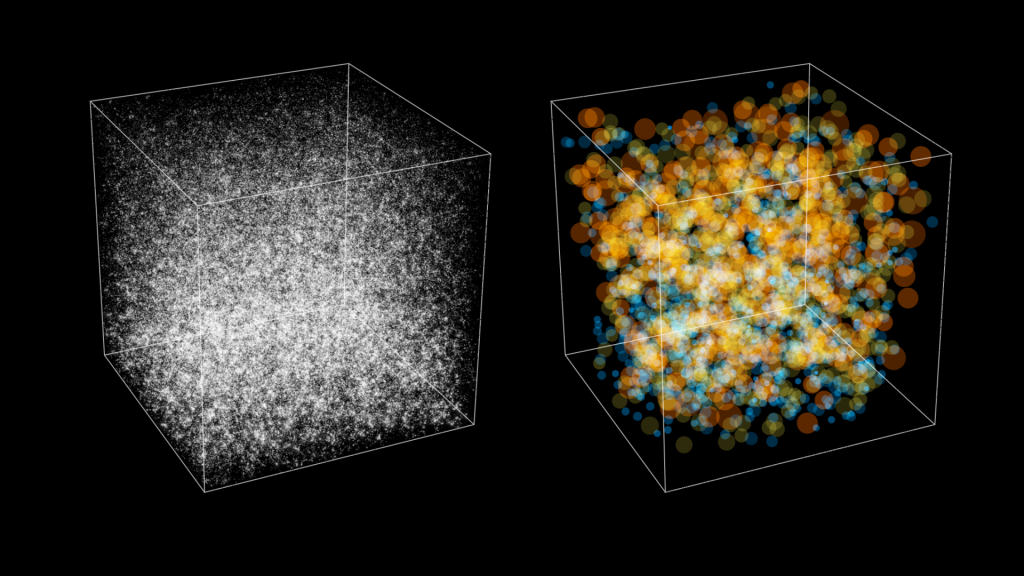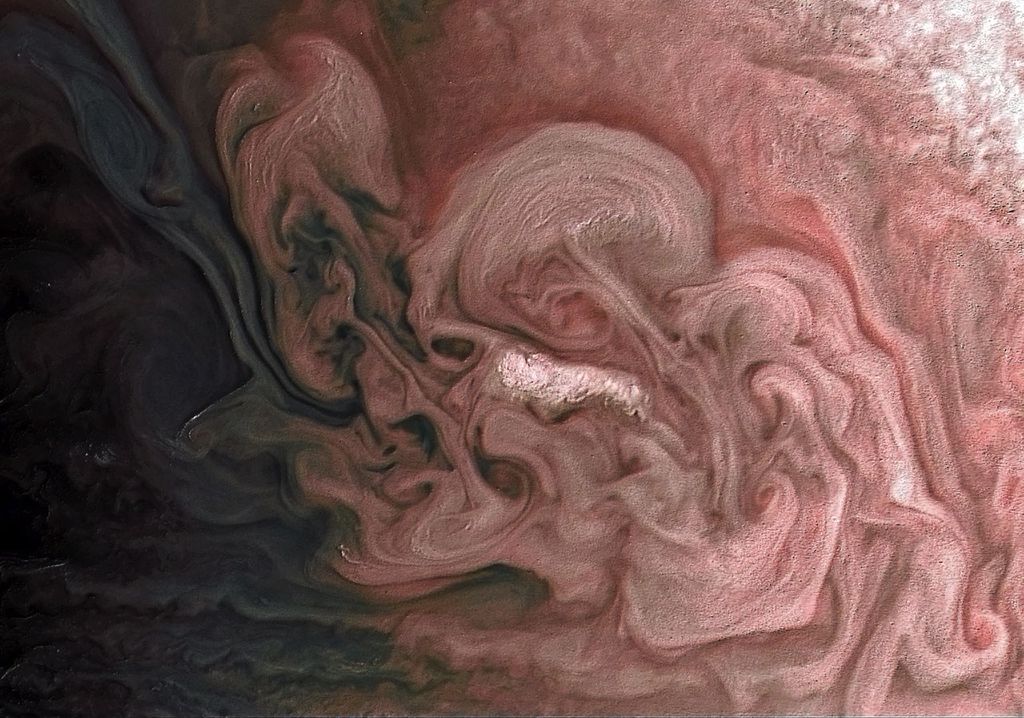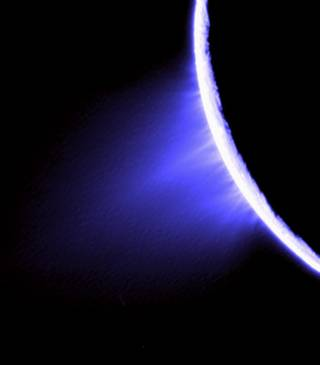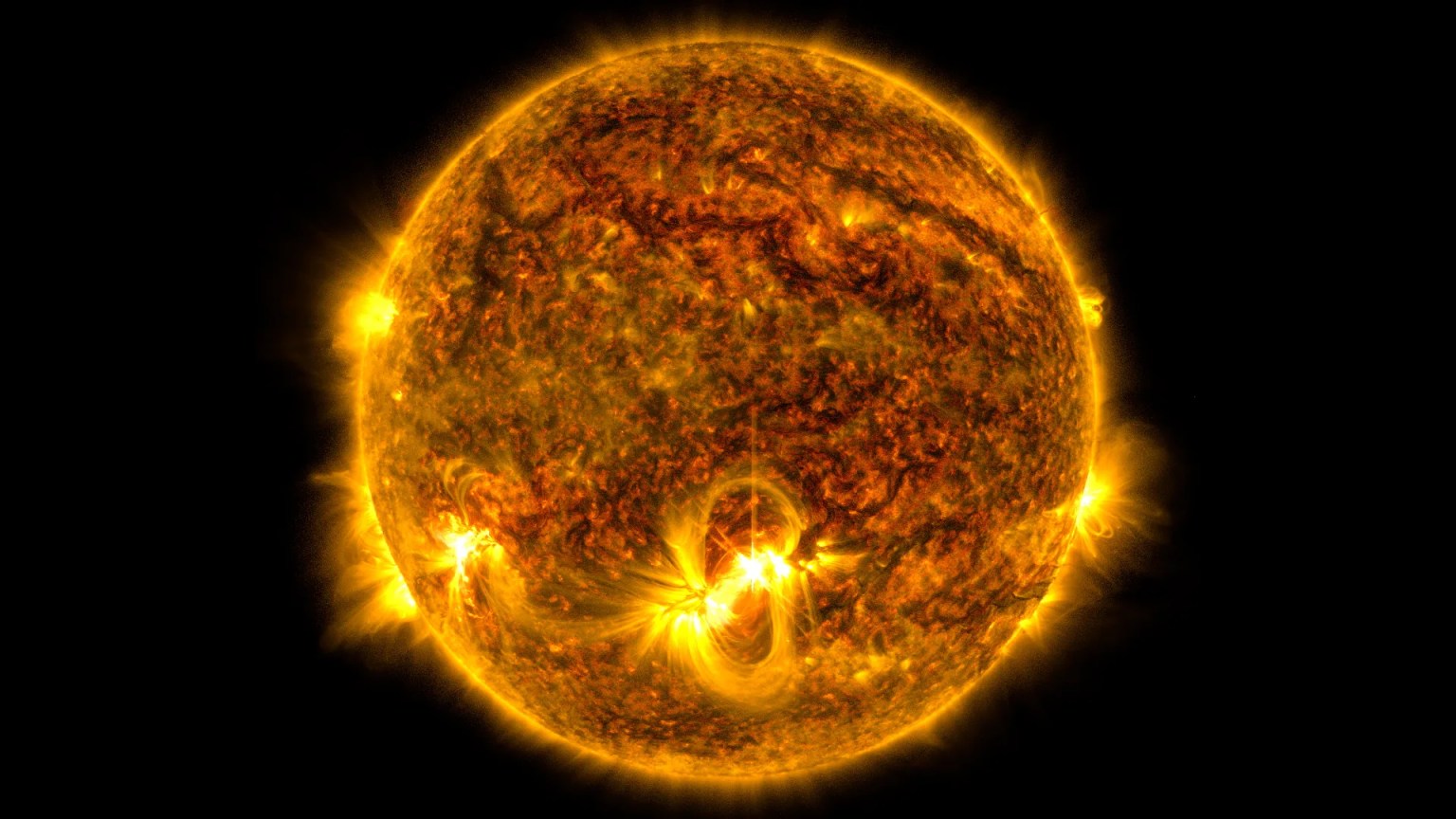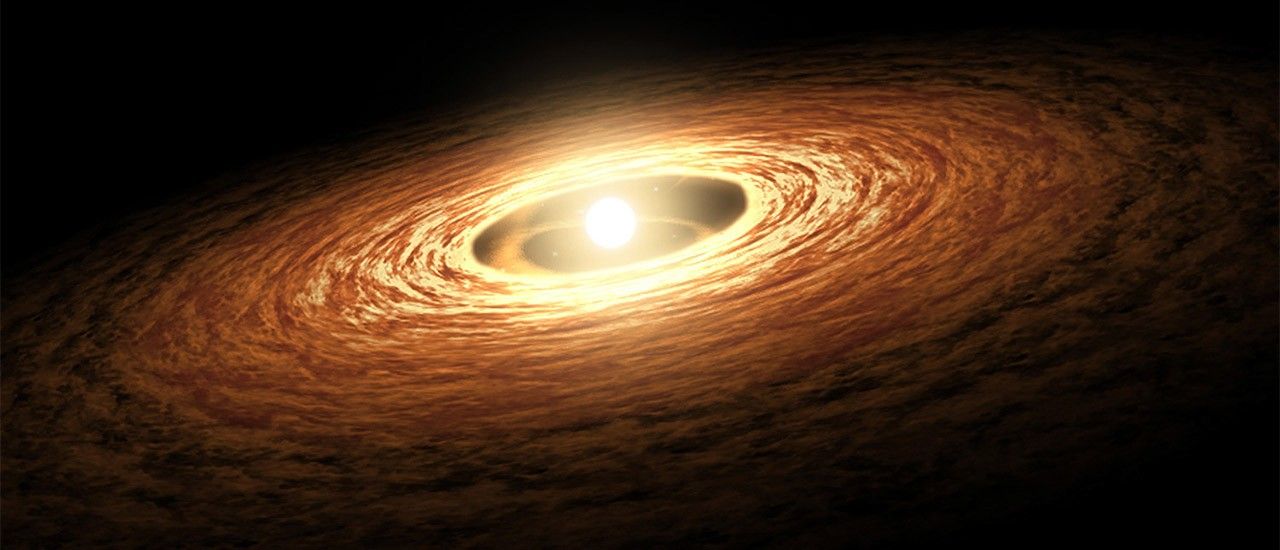Let's Explore
-
01
Kepler-16 b: (Almost) a Real-life Tatooine
A moody scene from “Star Wars” – Luke Skywalker watching a double sunset on his home world of Tatooine – seemed to gain a real-life analog with the announcement of a stunning discovery in 2011 of a planet dubbed Kepler-16 b.
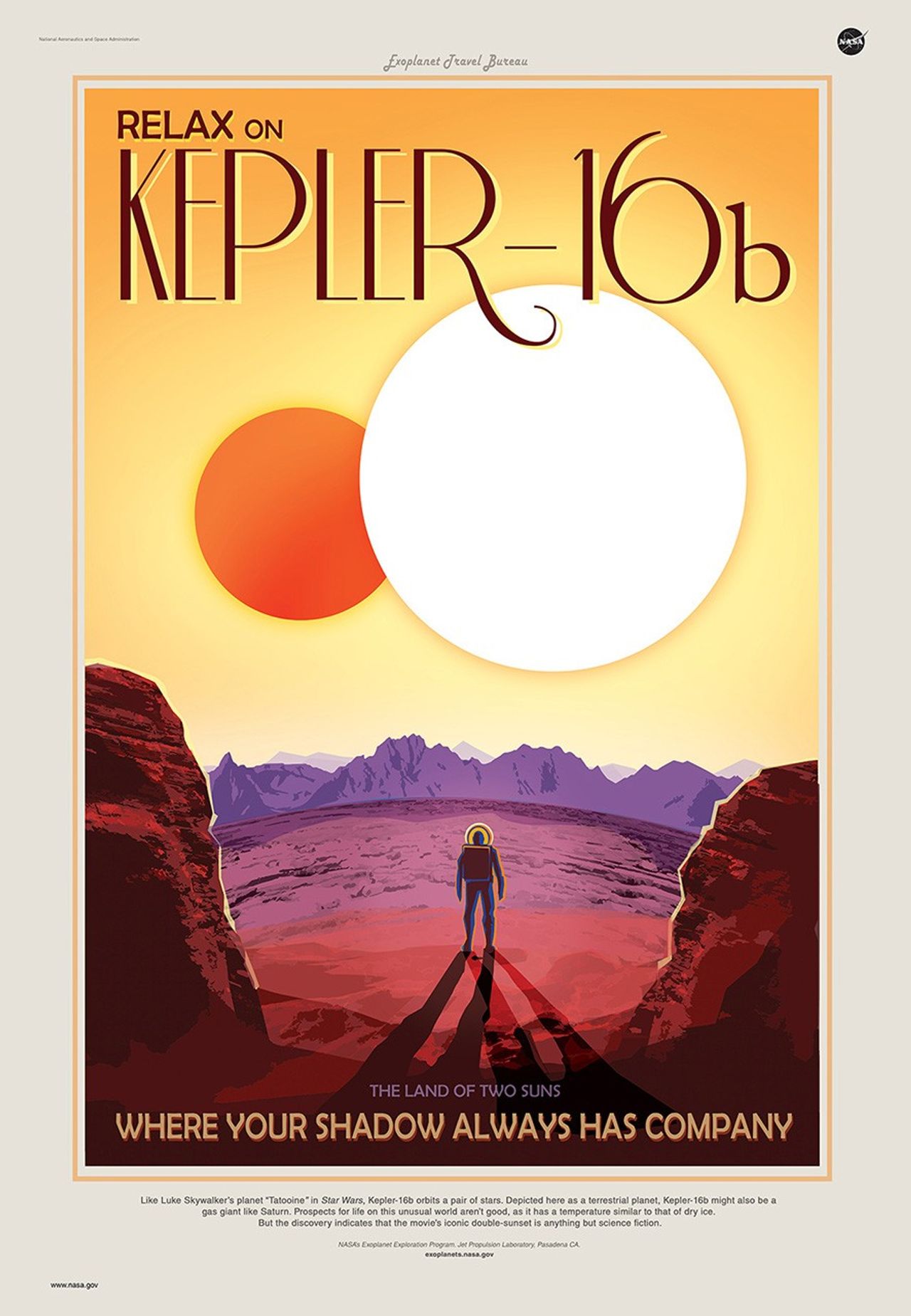 An imagined view from a moon of the exoplanet Kepler-16 b.NASA/JPL-Caltech
An imagined view from a moon of the exoplanet Kepler-16 b.NASA/JPL-Caltech -
02
Our Nearest Celestial Neighbor — An Exotic 3-Star System
A journey of 4.25 light-years will bring you to our nearest neighboring star: Proxima Centauri, or Proxima Cen for short. At least one planet, and possibly two more, orbit the star, making the planet – or planets – the closest outside our solar system.
 Shining brightly in this Hubble image is our closest stellar neighbor: Proxima Centauri. Proxima Centauri lies in the constellation of Centaurus (The Centaur), just over 4 light-years from Earth. Although it looks bright through the eye of Hubble, as you might expect from the nearest star to the solar system, Proxima Centauri is not visible to the naked eye. Its average luminosity is very low, and it is quite small compared to other stars, at only about an eighth of the mass of the Sun.
Shining brightly in this Hubble image is our closest stellar neighbor: Proxima Centauri. Proxima Centauri lies in the constellation of Centaurus (The Centaur), just over 4 light-years from Earth. Although it looks bright through the eye of Hubble, as you might expect from the nearest star to the solar system, Proxima Centauri is not visible to the naked eye. Its average luminosity is very low, and it is quite small compared to other stars, at only about an eighth of the mass of the Sun. -
03
For Seven Earth-Sized Planets, a Question of Habitability
They make up perhaps the most famous planetary system beyond our own: the TRAPPIST-1 star and its seven small, rocky worlds — lettered b through h — some 40 light-years away from Earth.
 This artist's concept shows what the TRAPPIST-1 planetary system may look like, based on available data about the planets' diameters, masses and distances from the host star. This image represents observations from NASA's Spitzer and Kepler space telescopes, in addition to the ground-based TRAPPIST (TRAnsiting Planets and PlanetesImals Small Telescope) telescope, and other ground-based observatories. The system was named for the TRAPPIST telescope.
This artist's concept shows what the TRAPPIST-1 planetary system may look like, based on available data about the planets' diameters, masses and distances from the host star. This image represents observations from NASA's Spitzer and Kepler space telescopes, in addition to the ground-based TRAPPIST (TRAnsiting Planets and PlanetesImals Small Telescope) telescope, and other ground-based observatories. The system was named for the TRAPPIST telescope. -
04
A Near-Twin of Our Solar System? Let’s Take a Closer Look
More than 2,500 light-years away from our Sun and its family of planets is a different family – a Sun-like star with a planetary entourage of eight. It’s the only system known so far with a planet count that matches our own.
 Artist’s concept of the Kepler-90 system compared with our own solar system.NASA/Ames Research Center/Wendy Stenzel
Artist’s concept of the Kepler-90 system compared with our own solar system.NASA/Ames Research Center/Wendy Stenzel -
05
Six Stars, One System
Two-star systems are quite common in our galaxy. Even systems with three stars are not especially rare – our nearest stellar neighbor, Alpha Centauri, is just such a trio. But then there's TYC 7037-89-1, a system of six stars in a balletic interplay rivaling Tchaikovsky.
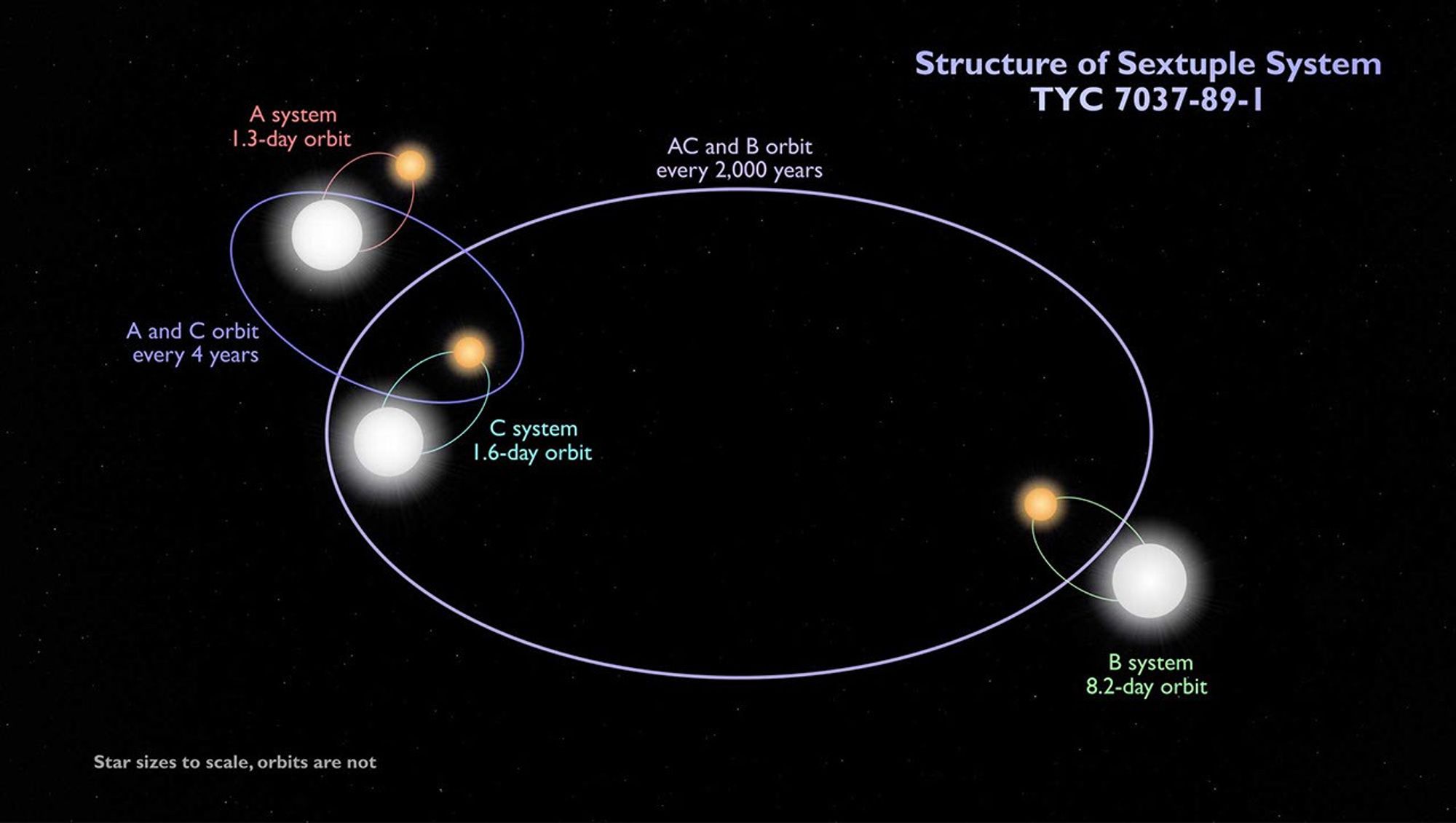 This schematic shows the configuration of the sextuple star system TYC 7037-89-1. The inner quadruple is composed of two binaries, A and C, which orbit each other every four years or so. An outer binary, B, orbits the quadruple roughly every 2,000 years. All three pairs are eclipsing binaries. The orbits shown are not to scale.NASA's Goddard Space Flight Center
This schematic shows the configuration of the sextuple star system TYC 7037-89-1. The inner quadruple is composed of two binaries, A and C, which orbit each other every four years or so. An outer binary, B, orbits the quadruple roughly every 2,000 years. All three pairs are eclipsing binaries. The orbits shown are not to scale.NASA's Goddard Space Flight Center













